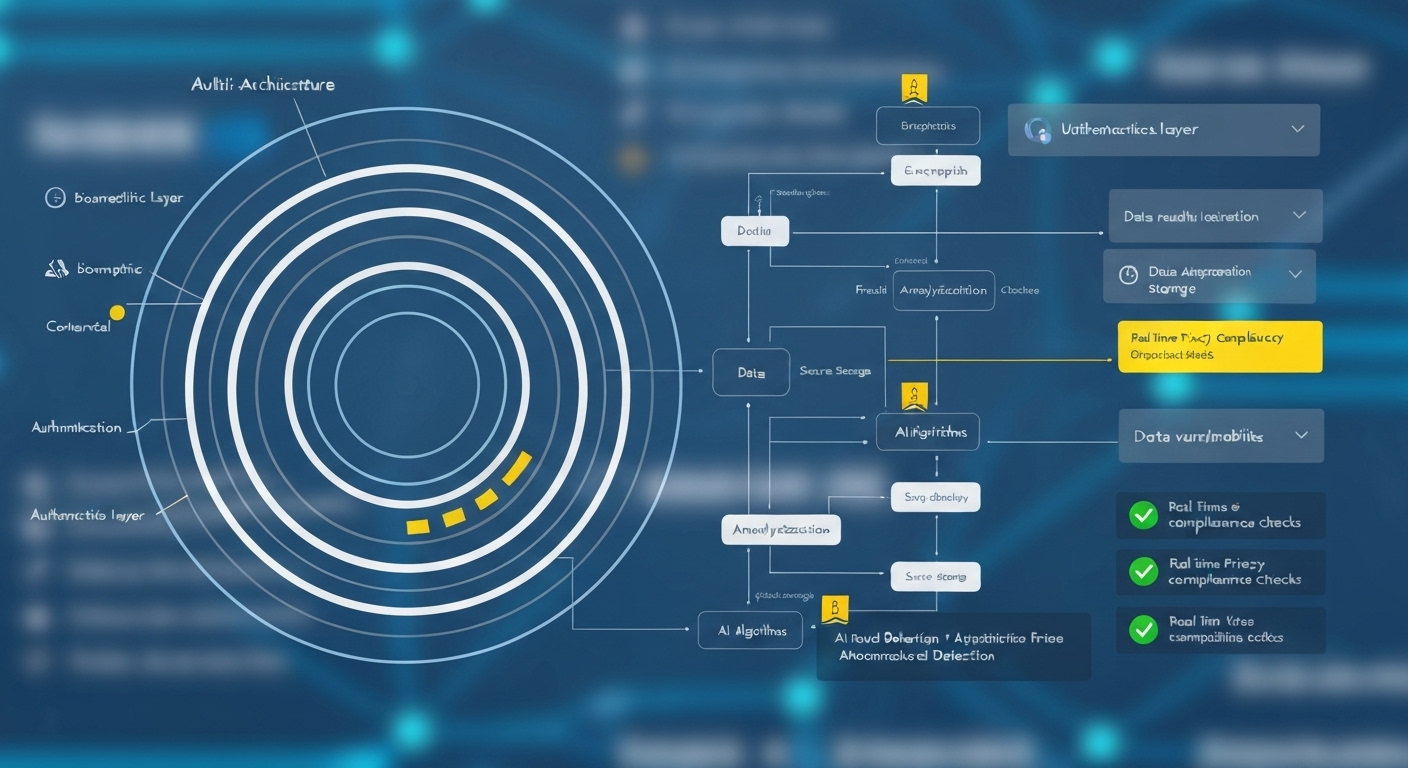AI for Enhanced User Authentication : A Comprehensive Guide
AI for enhanced user authentication is rapidly transforming the landscape of digital security, offering more robust and user-friendly methods than traditional password-based systems. This article explores the various facets of AI in authentication, including its benefits, technologies, and future implications.
Understanding the Need for Enhanced User Authentication
Traditional authentication methods, such as passwords and security questions, are increasingly vulnerable to breaches and phishing attacks. Users often choose weak passwords or reuse them across multiple accounts, creating easy targets for cybercriminals. This vulnerability necessitates more sophisticated and secure authentication solutions.

How AI is Revolutionizing User Authentication
Artificial intelligence offers several advantages in user authentication, including increased security, improved user experience, and enhanced fraud detection capabilities. AI-powered systems can analyze vast amounts of data to identify patterns and anomalies, enabling them to detect and prevent unauthorized access attempts.
Biometric Authentication with AI
Biometric authentication uses unique biological traits to verify a user’s identity. AI algorithms can analyze and process biometric data, such as fingerprints, facial features, and voice patterns, to create highly secure authentication systems. This reduces reliance on passwords and provides a more seamless user experience.

Behavioral Biometrics: A New Frontier
Behavioral biometrics analyzes a user’s unique patterns of interaction with devices, such as typing speed, mouse movements, and gait. Machine learning algorithms can learn these patterns and use them to authenticate users continuously and passively. This provides an additional layer of security without requiring explicit user input.
Adaptive Authentication: Tailoring Security to Risk
Adaptive authentication, also known as risk-based authentication, uses AI to assess the risk associated with a login attempt and adjust the authentication requirements accordingly. For example, a low-risk login from a known device might require only a password, while a high-risk login from an unknown location might require multi-factor authentication.
Benefits of AI-Powered Authentication Systems
Implementing AI for enhanced user authentication offers numerous benefits:
- Improved Security: AI algorithms can detect and prevent sophisticated cyberattacks.
- Enhanced User Experience: Biometric and behavioral authentication methods provide a seamless and convenient user experience.
- Reduced Fraud: AI-powered systems can identify and prevent fraudulent activities in real-time.
- Cost Savings: By preventing fraud and reducing password-related issues, organizations can save significant costs.
- Increased Compliance: AI authentication solutions can help organizations comply with data privacy regulations and security standards.
Implementing AI Authentication: Key Considerations
Implementing AI authentication requires careful planning and consideration of various factors:
Data Privacy and Security
It is crucial to ensure that biometric and behavioral data are collected, stored, and processed securely and in compliance with data privacy regulations. Organizations must implement strong data encryption and access control measures to protect sensitive information.

Integration with Existing Systems
AI authentication systems should be seamlessly integrated with existing IT infrastructure and applications. This requires careful planning and coordination between different departments and vendors.
User Training and Education
Users need to be educated about the benefits and security features of AI authentication systems. This will help them understand and accept the new authentication methods and reduce resistance to change.
Examples of AI in User Authentication
Several companies and organizations are already leveraging AI to enhance user authentication. For instance, financial institutions use AI-powered fraud detection systems to identify and prevent fraudulent transactions. E-commerce platforms use behavioral biometrics to authenticate users and prevent account takeovers.
The Role of Machine Learning in Authentication
Machine learning plays a vital role in AI-driven authentication. By learning from vast datasets, machine learning algorithms can identify subtle patterns and anomalies that would be impossible for humans to detect. This enables them to provide more accurate and reliable authentication results.
Future Trends in AI Authentication
The future of AI authentication is promising, with several emerging trends and technologies on the horizon:
- Advanced Biometrics: New biometric modalities, such as vein recognition and heart rate variability, are being developed to provide even more secure and reliable authentication.
- AI-Powered Threat Intelligence: AI algorithms are being used to gather and analyze threat intelligence data to proactively identify and prevent cyberattacks.
- Decentralized Authentication: Blockchain technology is being combined with AI to create decentralized authentication systems that are more secure and resistant to tampering.
Challenges and Limitations of AI Authentication
Despite its numerous benefits, AI authentication also faces certain challenges and limitations:
- Bias in Algorithms: AI algorithms can be biased if they are trained on biased data, leading to unfair or discriminatory authentication results.
- Adversarial Attacks: AI systems are vulnerable to adversarial attacks, where attackers intentionally manipulate input data to trick the system into making incorrect decisions.
- Privacy Concerns: The collection and use of biometric and behavioral data raise privacy concerns that need to be addressed carefully.

Passwordless Authentication and AI
AI is a key enabler of passwordless authentication, offering alternatives like biometric scans and behavioral analysis to verify identity without the need for traditional passwords. This drastically improves security and user convenience.
AI Security Solutions and the Cloud
Cloud-based AI security solutions offer scalability and accessibility, allowing organizations to deploy advanced authentication methods quickly and efficiently. However, ensuring the security of data stored in the cloud is paramount.
Staying Ahead: Continuous Learning and Adaptation
The threat landscape is constantly evolving, so it’s critical to continuously update and adapt AI authentication systems to stay ahead of emerging threats. Regular security audits and updates are essential.
For more detailed information on how machine learning enhances cybersecurity, you can visit NIST.
For innovative cloud solutions, explore flashs.cloud.
Conclusion
AI for enhanced user authentication represents a significant advancement in digital security. By leveraging the power of artificial intelligence, organizations can create more secure, user-friendly, and cost-effective authentication systems. While challenges remain, the benefits of AI authentication are undeniable, making it an essential component of modern cybersecurity strategies.
HOTLINE
+84372 005 899


